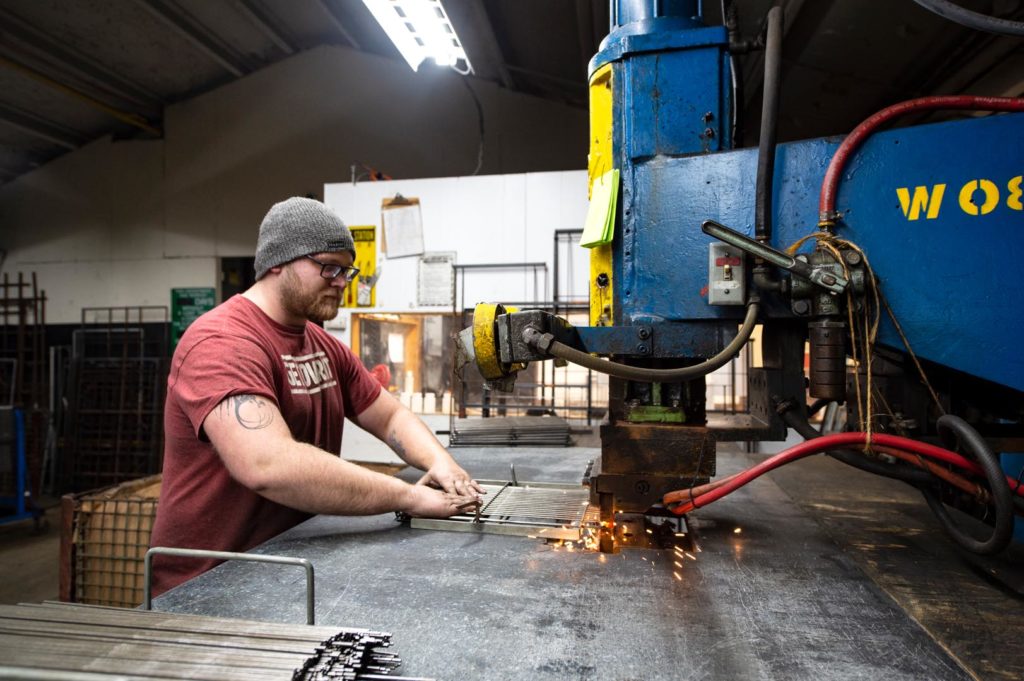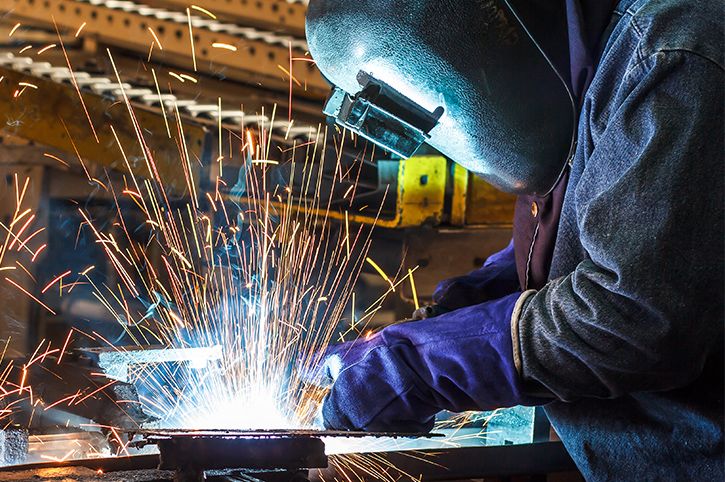Proven steps to prevent porosity in welds with Belgrade Welding
Wiki Article
Typical Welding Repair Issues and Just How to Address Them Effectively
Welding repair work commonly encounter a series of concerns that can jeopardize the integrity of the final item. Common problems consist of inadequate infiltration, porosity, and imbalance, among others. Each flaw provides distinct difficulties that call for certain techniques for resolution. Understanding these problems is essential for welders aiming to improve their abilities and results. This discussion will explore these common welding repair problems and efficient approaches to address them.Poor Infiltration
Insufficient penetration takes place when the weld metal stops working to fully fuse with the base product, resulting in weak joints and prospective architectural failures. This problem usually originates from inadequate warm input, wrong electrode angle, or incorrect welding speed. Welders may encounter poor infiltration as a result of a miscalculation of the required criteria for a certain material thickness or type. In addition, contamination on the base material's surface area can impede effective bonding, exacerbating the problem. To resolve insufficient infiltration, welders need to ensure proper settings on their equipment and preserve a clean work surface. Regular assessment of welds is recommended to recognize any kind of shortages early, enabling prompt modifications and the prevention of endangered architectural stability in bonded settings up.Porosity
Porosity is a typical defect in bonded joints that shows up as tiny gas bubbles caught within the weld steel. This flaw can jeopardize the honesty of the weld, resulting in minimized strength and prospective failing under anxiety. Belgrade Welding. Porosity normally develops from contamination, wetness, or inappropriate welding techniques, which permit gases to escape into the molten weld swimming pool. To deal with porosity, welders should guarantee appropriate surface area prep work, keep a clean functioning environment, and use appropriate welding specifications. Furthermore, choosing the ideal filler product and shielding gas can minimize gas entrapment. Regular examination and testing of welds can help identify porosity early, assuring prompt restorative actions are taken, therefore protecting the quality and integrity of the bonded frameworkMisalignment
Misalignment in welding can occur from various elements, including incorrect setup and thermal expansion. Comprehending the origin is necessary for efficient resolution. Numerous improvement strategies are readily available to straighten components and assure structural honesty.Reasons of Misalignment
Welding imbalance frequently comes from a selection of underlying problems that can endanger architectural honesty. One primary cause is inappropriate fit-up of parts prior to welding, which can lead to voids and uneven surfaces. Variants in thermal growth throughout the welding process can likewise result in distortion, specifically if the products being joined have various coefficients of growth. Furthermore, poor fixturing and securing might fail to hold elements safely in position, causing movement during welding. Improperly kept devices, consisting of welding devices and tools, may introduce inconsistencies in the weld grain, further contributing to misalignment. Operator mistake, stemming from not enough training or experience, can additionally play a significant function in creating misaligned welds.
Improvement Techniques Readily Available
Attending to misalignment successfully requires a combination of restorative techniques tailored to the specific concerns at hand. One usual method is the use of jigs or fixtures to hold components in the proper position during welding, making certain constant positioning. Additionally, preheating the materials can help reduce distortion and enhance fit-up. For substantial imbalance, mechanical realignment techniques, such as making use of hydraulic jacks or clamps, can be utilized to deal with the position prior to welding. Post-weld warm treatment might also be required to relieve anxieties triggered by misalignment. Lastly, mindful evaluation and adjustment during the setup phase can avoid imbalance issues from becoming considerable problems, promoting a smoother welding process and boosting total structural stability.Distortion
Distortion is an usual obstacle in welding that can arise from various elements, including uneven cooling and heating. Understanding the root causes of distortion is crucial for carrying out effective prevention strategies. Resolving this issue not only boosts structural stability but also enhances the general quality of the weld.Root causes of Distortion
When based on the intense heat of welding, products frequently undertake adjustments that can lead to distortion. This sensation mostly emerges from thermal development and contraction during the welding process. As the weld location warms up, the product expands; upon cooling, it gets, which can develop internal stress and anxieties. Furthermore, uneven heating throughout a workpiece can aggravate these anxieties, leading to bending or bending. The kind of material additionally plays a substantial duty; steels with varying thermal conductivity and coefficients of expansion might react in a different way, causing unforeseeable distortions. Additionally, bad joint style and insufficient fixturing can add to misalignment during welding, enhancing the probability of distortion. Comprehending these reasons is vital for reliable welding repair work and This Site avoidance techniques.Avoidance Techniques
Efficient avoidance strategies for distortion during welding concentrate on controlling heat input and ensuring correct joint layout. Maintaining a regular warmth input assists to lessen thermal development and contraction, which can result in distortion. Making use of strategies such as preheating the work surface can additionally decrease the temperature level gradient, advertising uniform home heating. Furthermore, selecting appropriate joint styles, such as T-joints or lap joints, can enhance stability and lower tension focus. Carrying out correct fixturing to protect the work surfaces in location better help in preserving placement throughout the welding process. Staggered welding sequences can disperse heat much more equally, protecting against local distortion. By applying these techniques, welders can substantially lower the possibility of distortion and boost the overall top quality of their welds.Splitting
Breaking is a typical issue run into in welding repair work, commonly arising from various elements such as inappropriate cooling prices, product selection, or inadequate joint preparation. The occurrence of fractures can significantly compromise the integrity of the weld, leading to possible failures during operation. To resolve this problem, welders must initially examine the source, making sure that products are compatible and suitably selected for the particular application. Additionally, regulating the cooling rate throughout the welding procedure is crucial; fast cooling can induce tension and bring about splitting. Appropriate joint layout and prep work additionally add to reducing the danger. Carrying out these techniques can boost weld high quality and sturdiness, eventually decreasing the likelihood of fracturing in finished weldments.
Insufficient Fusion
A significant problem in welding repair work is insufficient fusion, which takes place when the weld steel does not effectively bond with the base product or previous weld passes - Fabrication. This defect can bring about weaknesses in the joint, possibly compromising the stability of the bonded structure. Aspects adding to incomplete combination include not enough warm input, improper welding strategy, and contamination of the surfaces being signed up with. To address this problem successfully, welders should ensure proper pre-weld cleaning and surface area prep work, in addition to change their welding parameters to attain sufficient infiltration and blend. Routine examination throughout the welding procedure can also help recognize incomplete blend early, allowing for timely corrective measures to improve the overall high quality of the weldOverheating
While welding repairs can boost architectural honesty, overheating offers a considerable obstacle that can lead to product degradation. Too much warmth throughout welding can modify the mechanical buildings of metals, resulting in reduced stamina, boosted brittleness, and warping. This sensation is especially essential in high-stress applications where architectural integrity is paramount. Recognizing overheating can include aesthetic examinations for staining or distortion, as well as monitoring temperature throughout the welding process. To reduce the dangers related to overheating, welders must utilize suitable methods, such as managing warmth input, readjusting traveling speed, and utilizing appropriate filler materials. In addition, carrying out pre- and post-weld warm therapies can aid bring back material properties and enhance the total high quality of the repair, guaranteeing lasting efficiency and safety and security.Regularly Asked Concerns
What Are the Usual Indications of a Welding Issue?

Exactly How Can I Evaluate My Welds for High quality?
To evaluate welds for quality, one can use aesthetic examinations, ultrasonic screening, and radiographic approaches. Each strategy guarantees structural integrity, identifies see this here problems, and verifies adherence to defined standards, ultimately enhancing the reliability of the welded joints.What Safety Preventative Measures Should I Take While Welding?
When welding, one must focus on security by putting on appropriate individual safety devices, ensuring appropriate air flow, protecting combustible materials away, maintaining a tidy work area, and understanding environments to protect against injuries and mishaps.Can I Repair a Weld Without Redoing the Entire Joint?
Repairing a weld without redesigning the entire joint is feasible, relying on the damages (Montana Mobile Welding and Repair). Strategies such as grinding, adding filler material, or utilizing a welding process can efficiently attend to specific flaws while protecting the bordering frameworkWhat Tools Are Necessary for Efficient Welding Repair Works?
Necessary tools for efficient welding fixings include a welding maker, cable brush, grinder, safety equipment, clamps, and filler materials. Each device plays a crucial function in ensuring quality and security throughout the repair work procedure. Porosity commonly emerges from contamination, wetness, or incorrect welding strategies, which enable gases to leave right into the molten weld swimming pool. Inadequately conserved devices, consisting of welding equipments and devices, might present variances in the weld bead, further contributing to imbalance. When subjected to the extreme warm of welding, products usually undertake modifications that can lead to distortion. Splitting is a common concern come across in welding fixings, usually resulting from different aspects such as improper air conditioning prices, material option, or poor joint prep work. A significant concern in welding repair services is incomplete combination, which occurs when the weld metal does not appropriately bond with the base material or previous weld passes.Report this wiki page